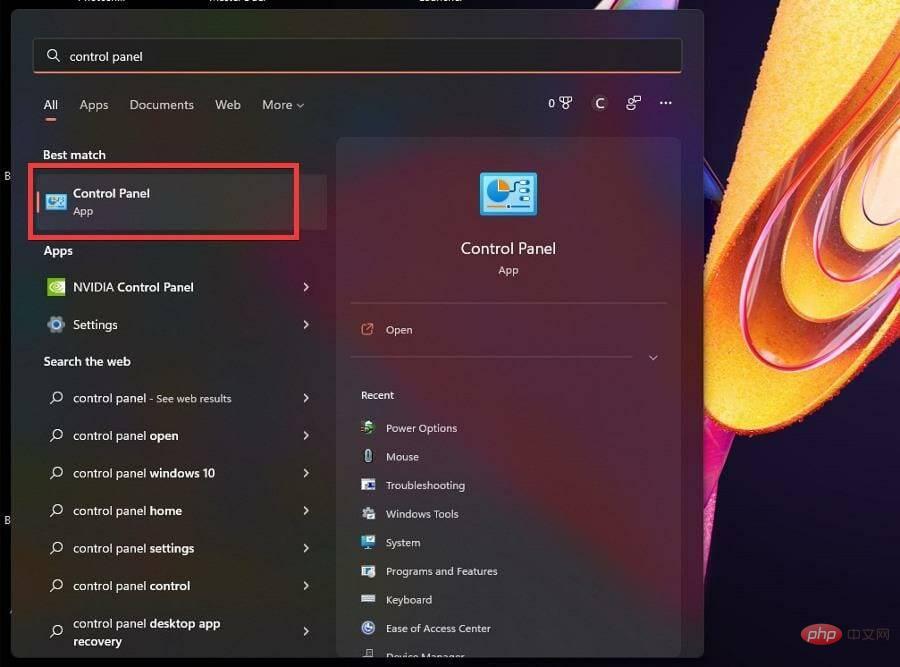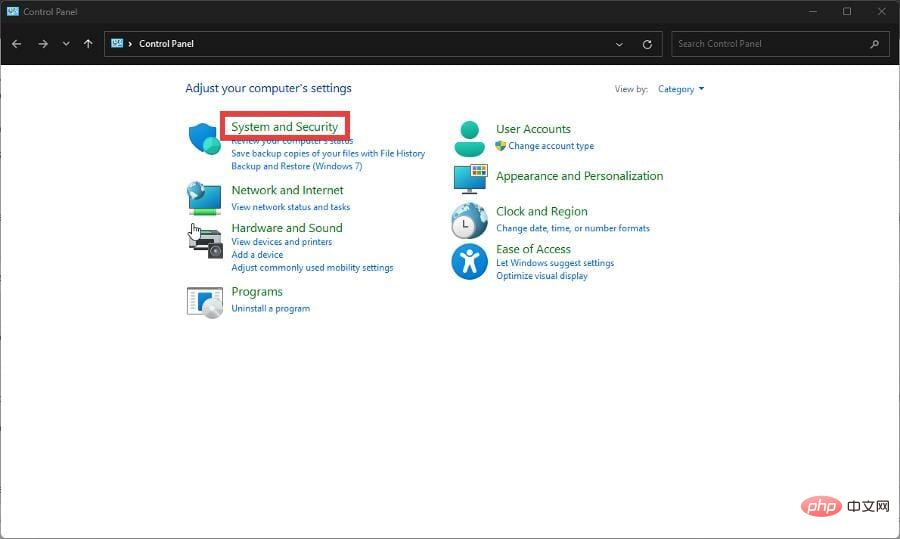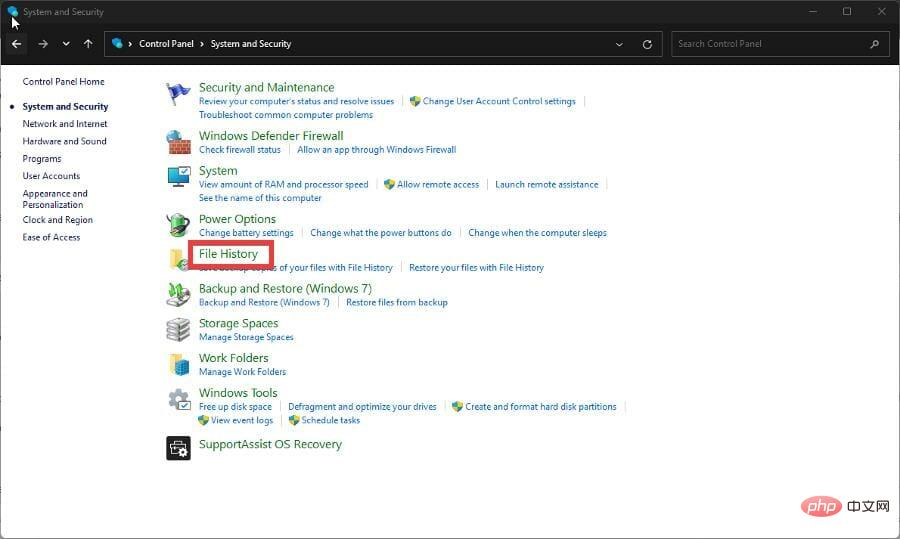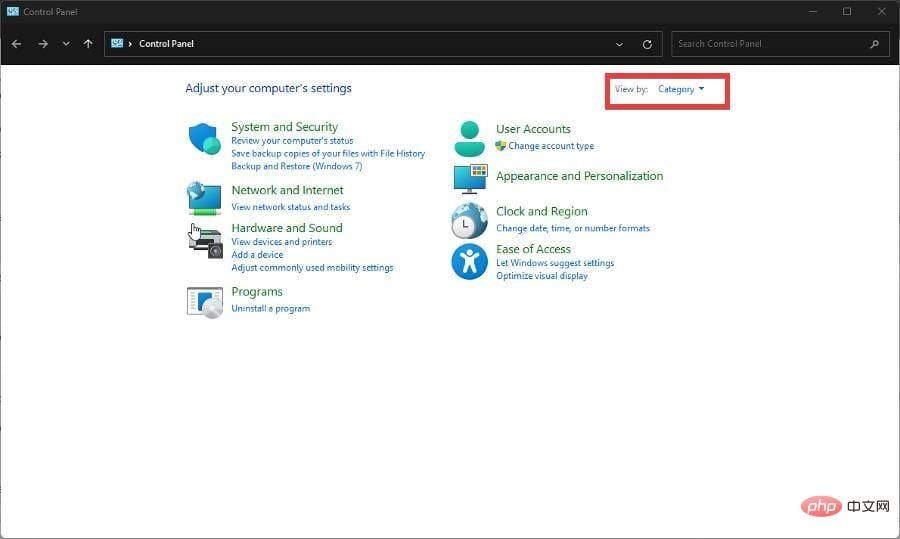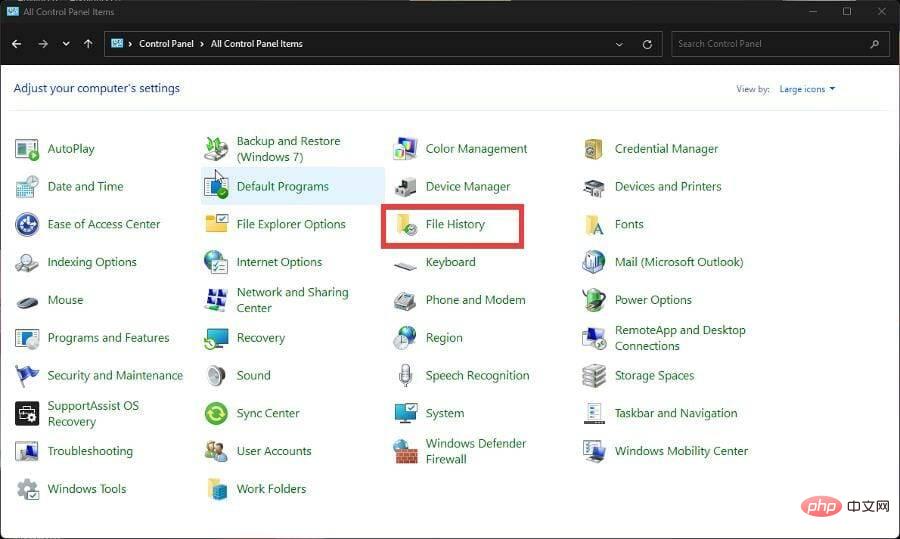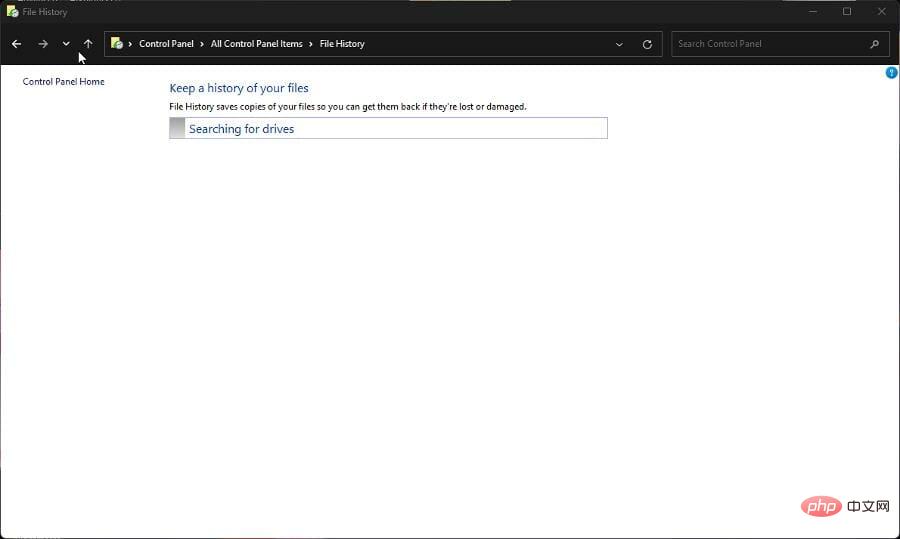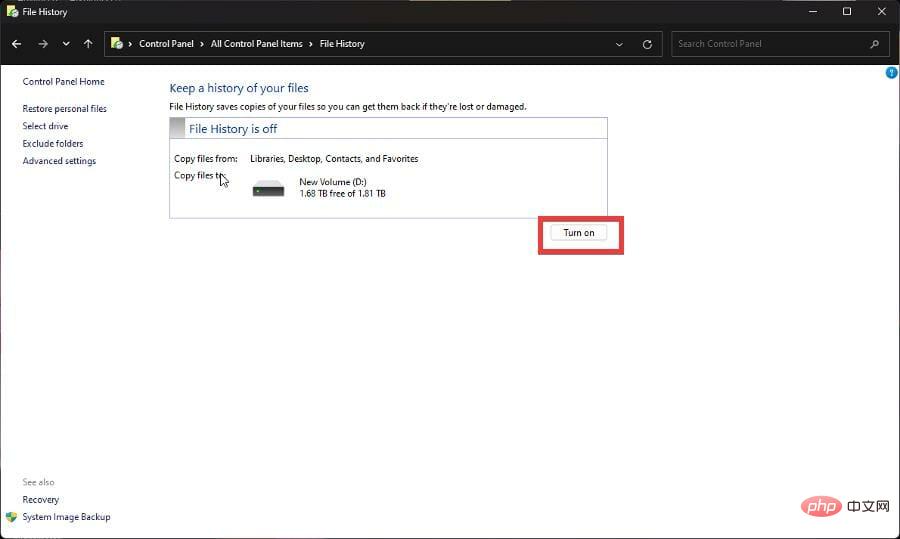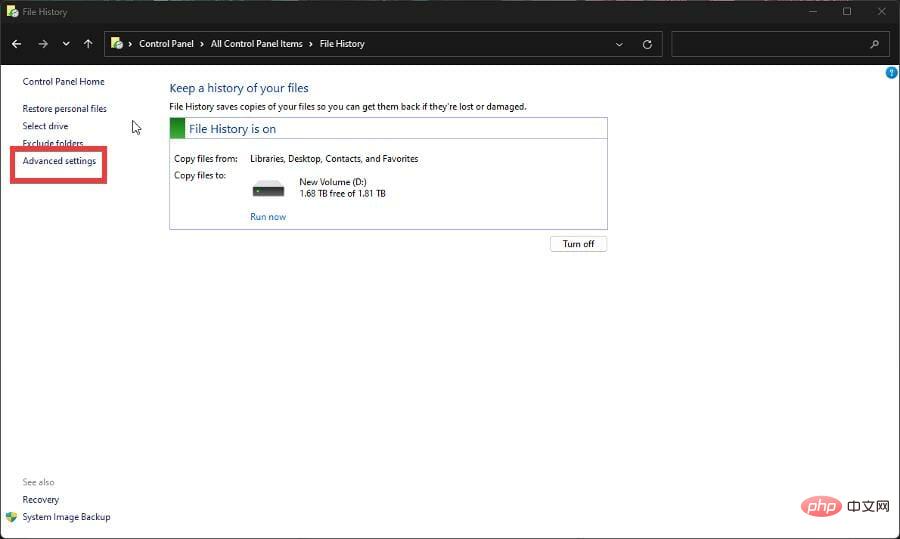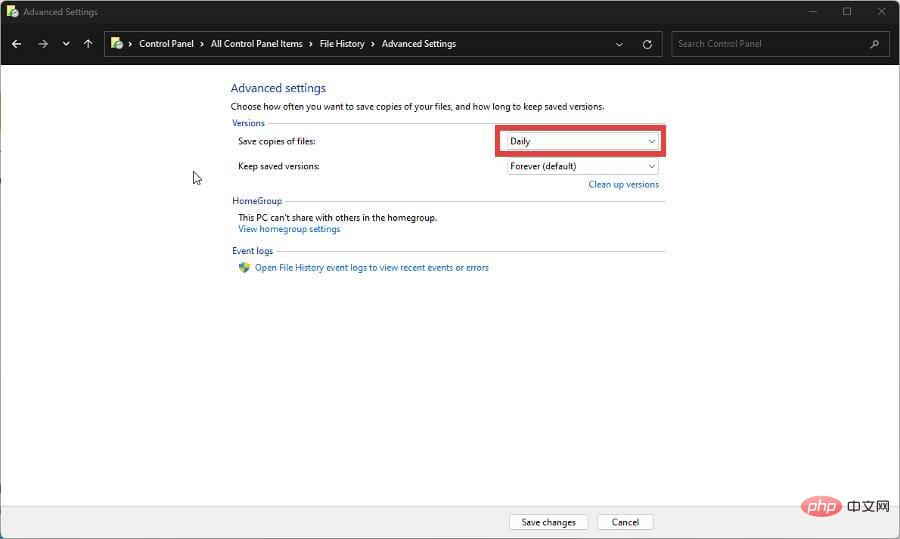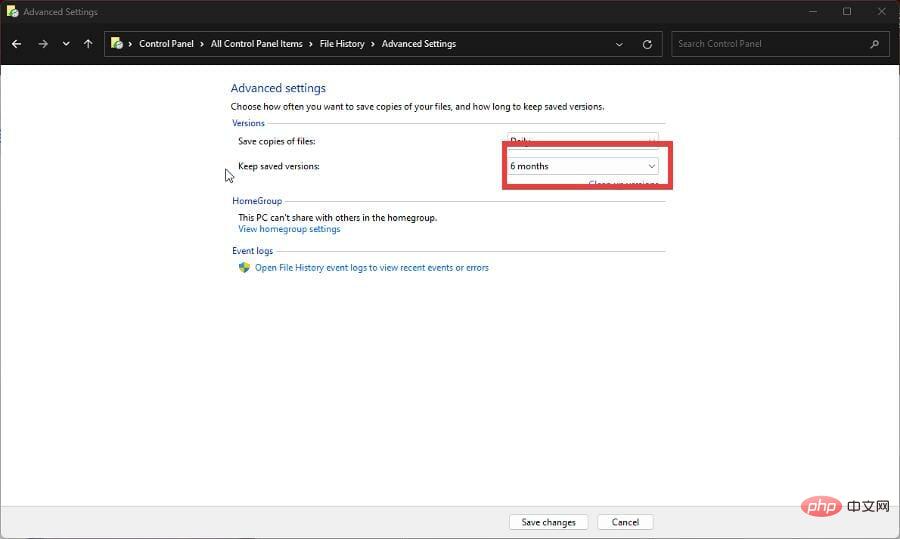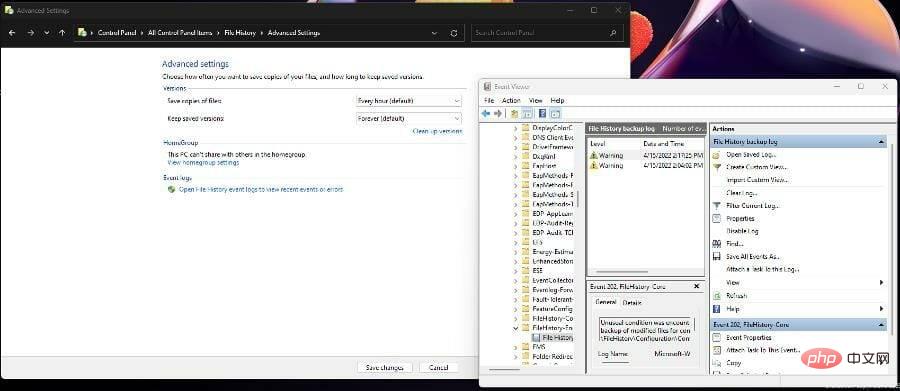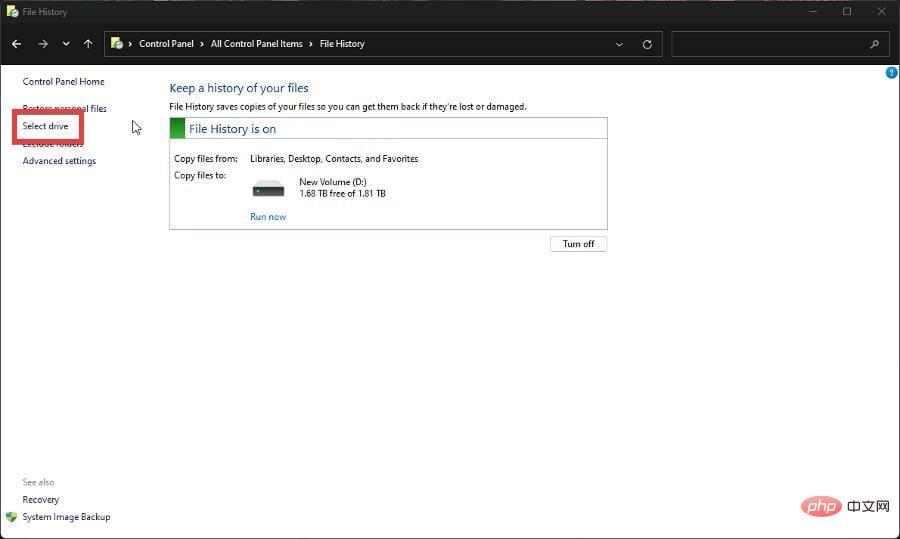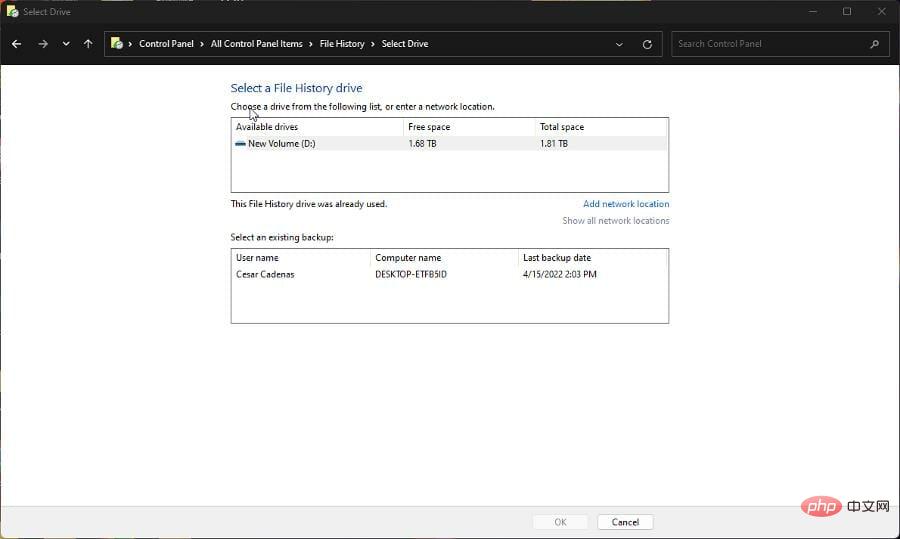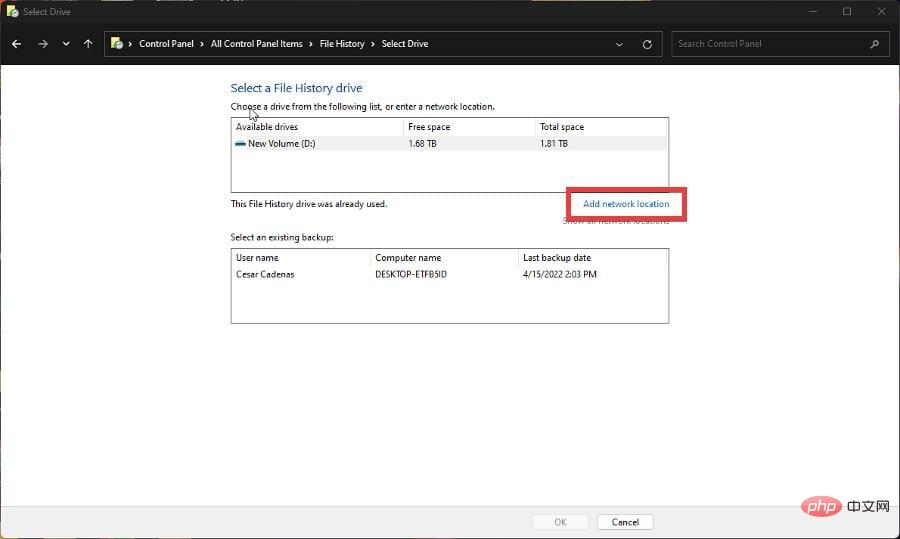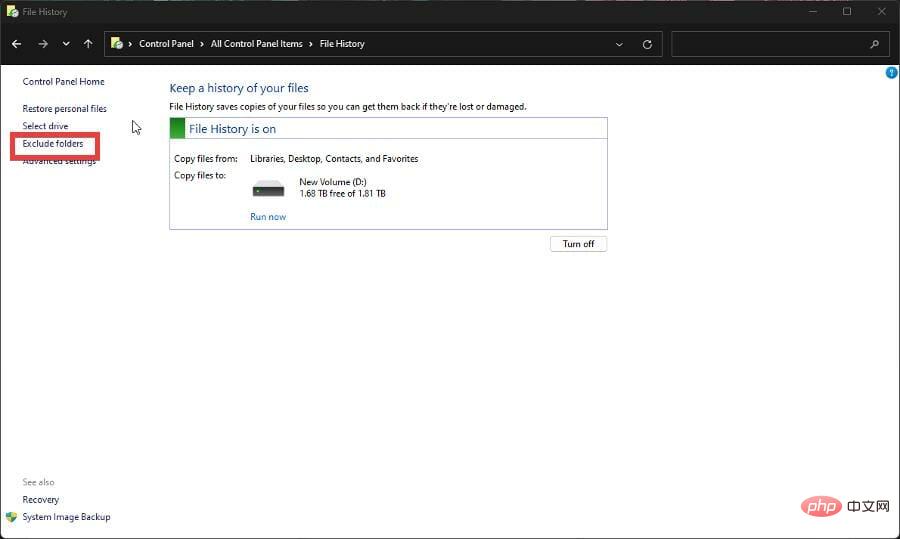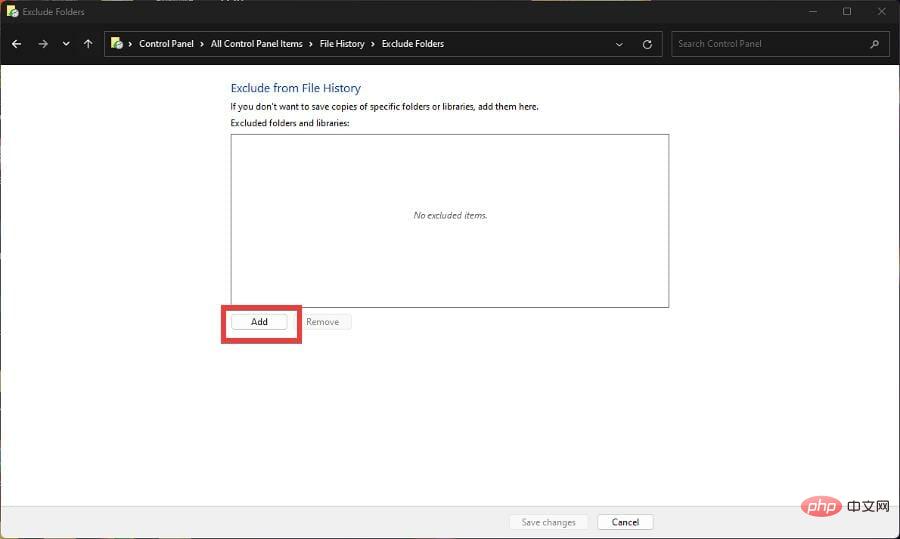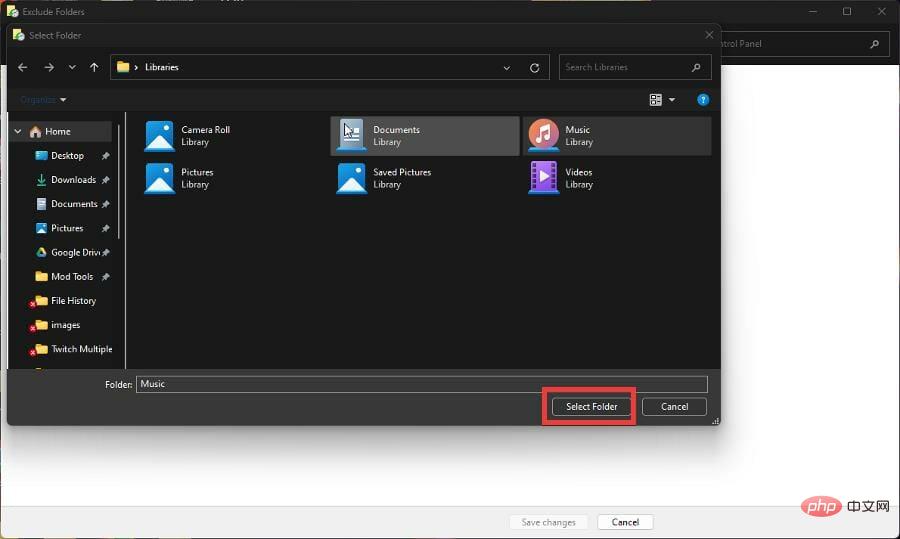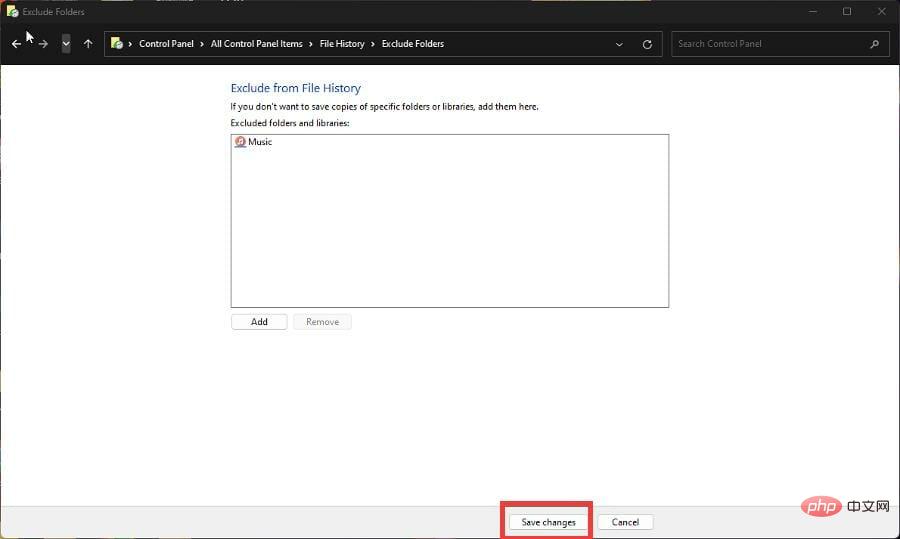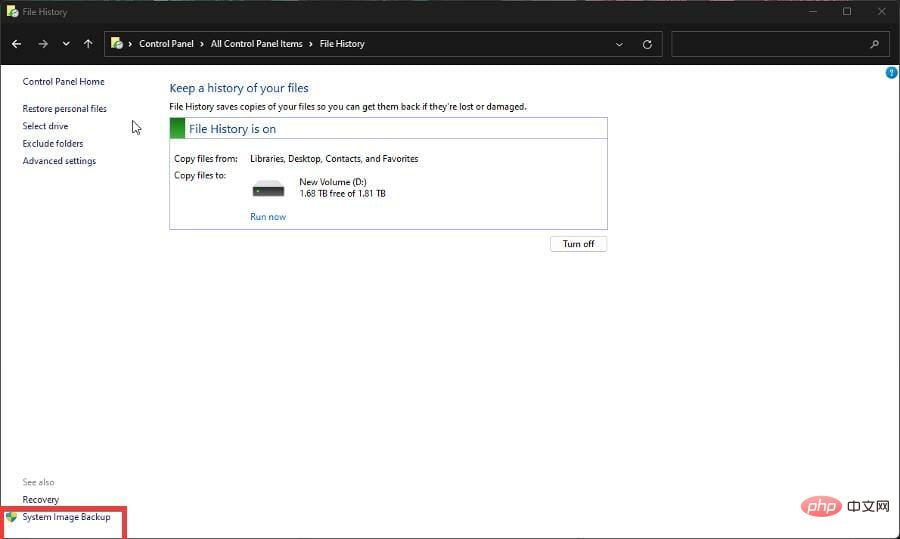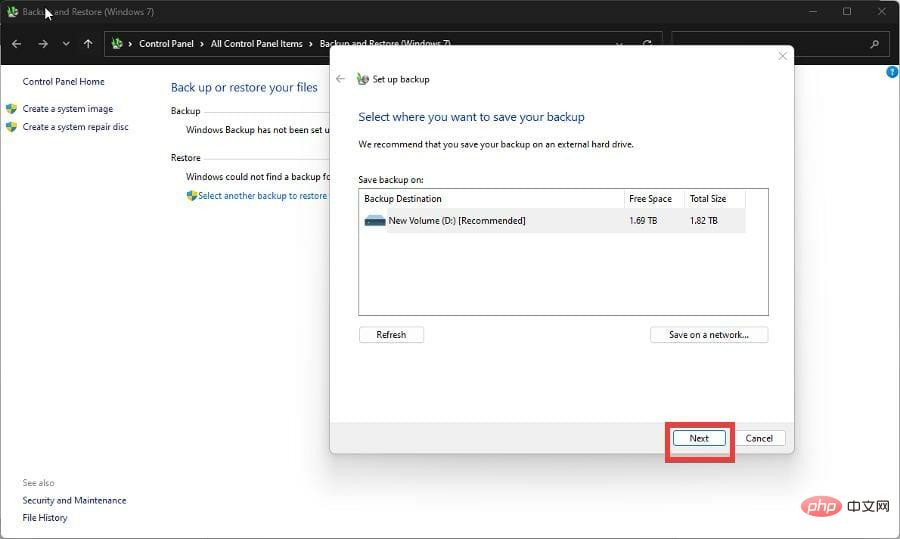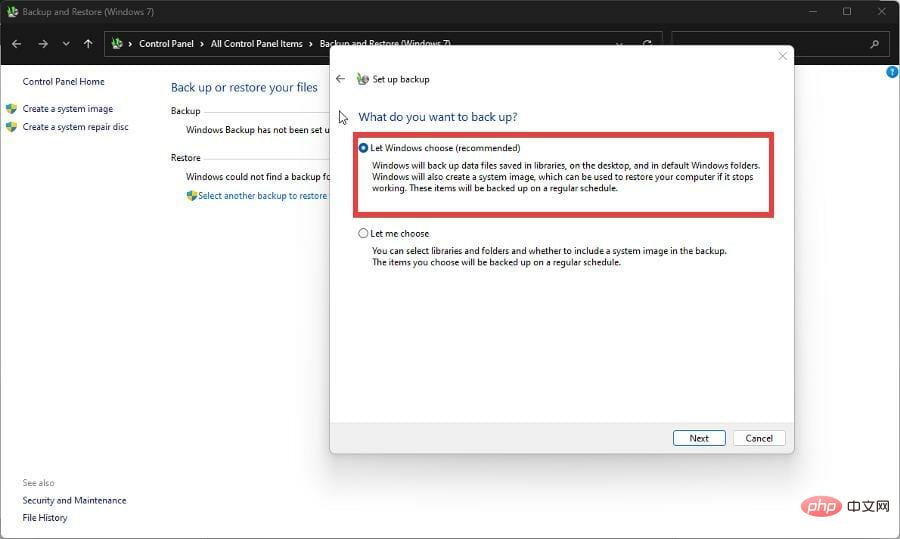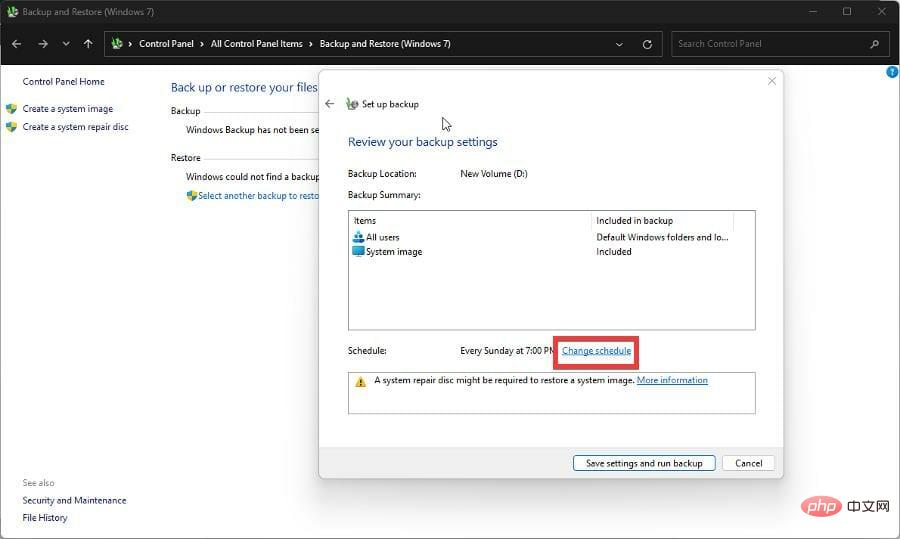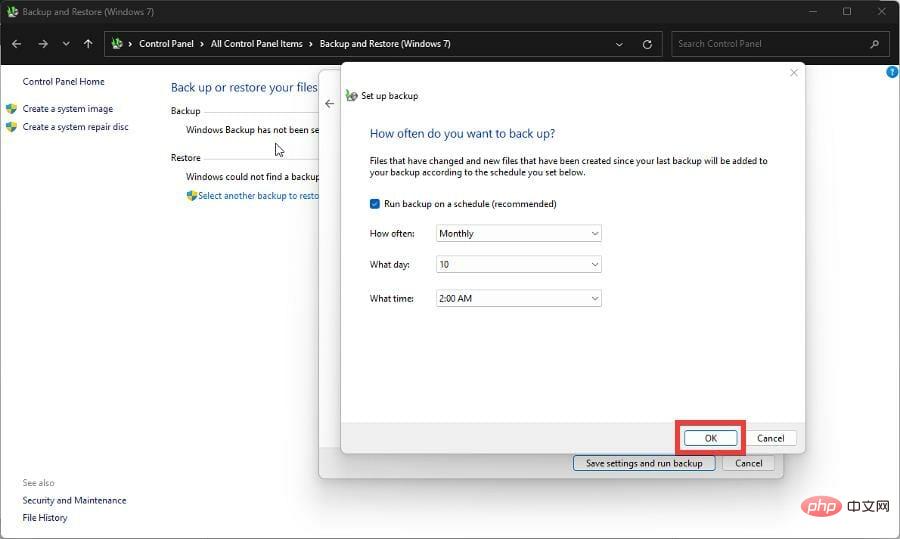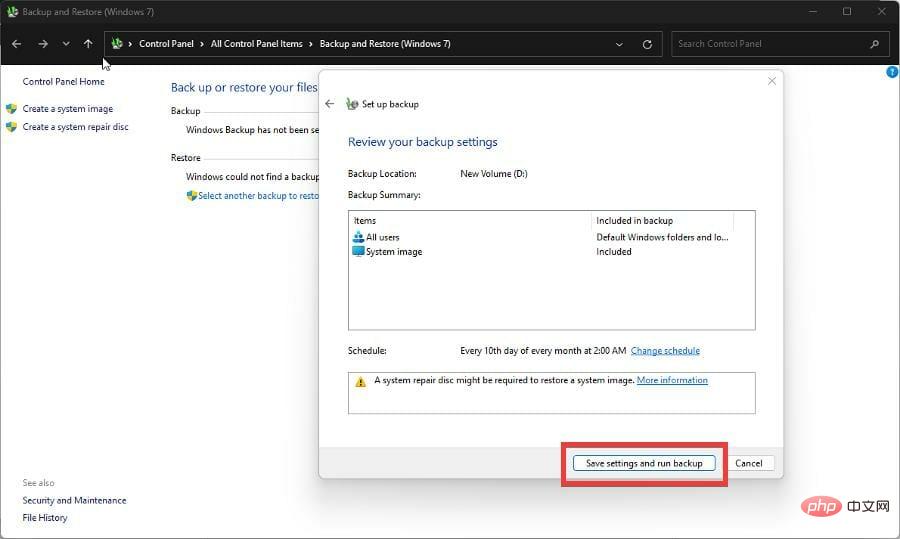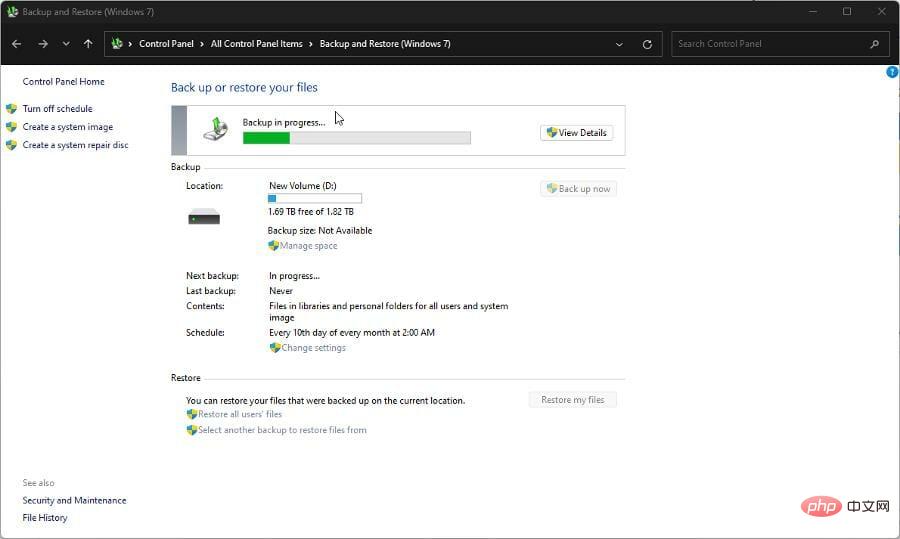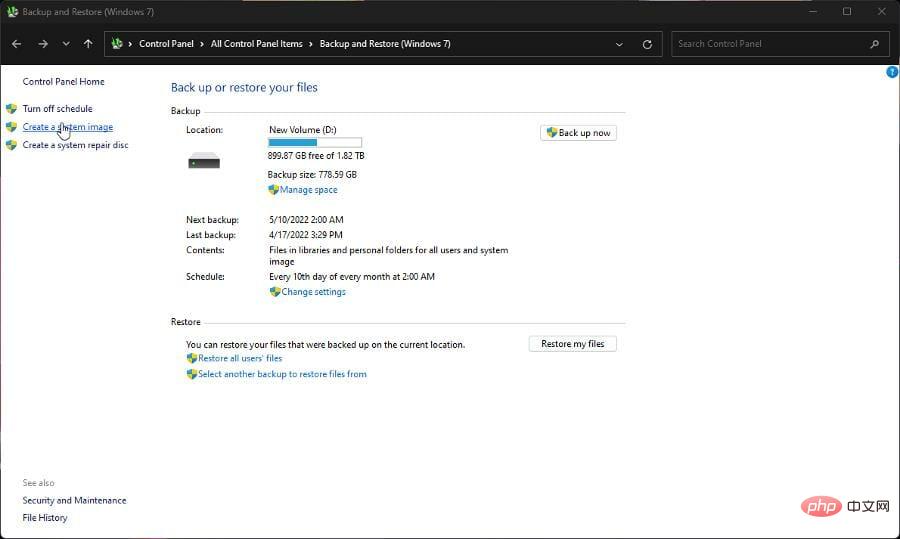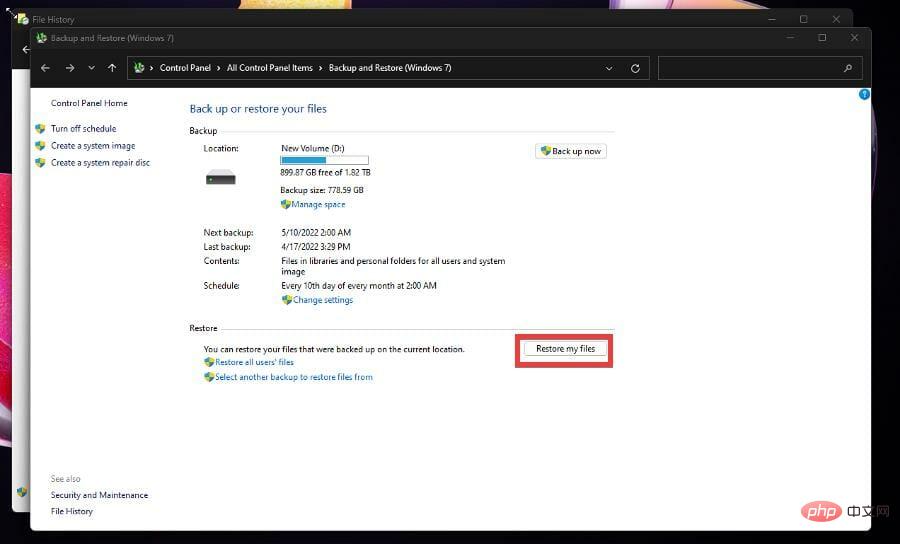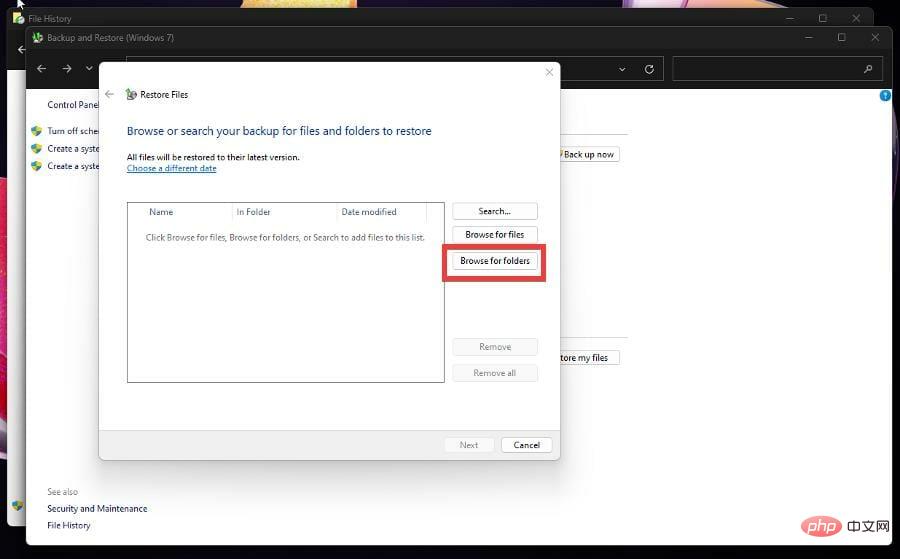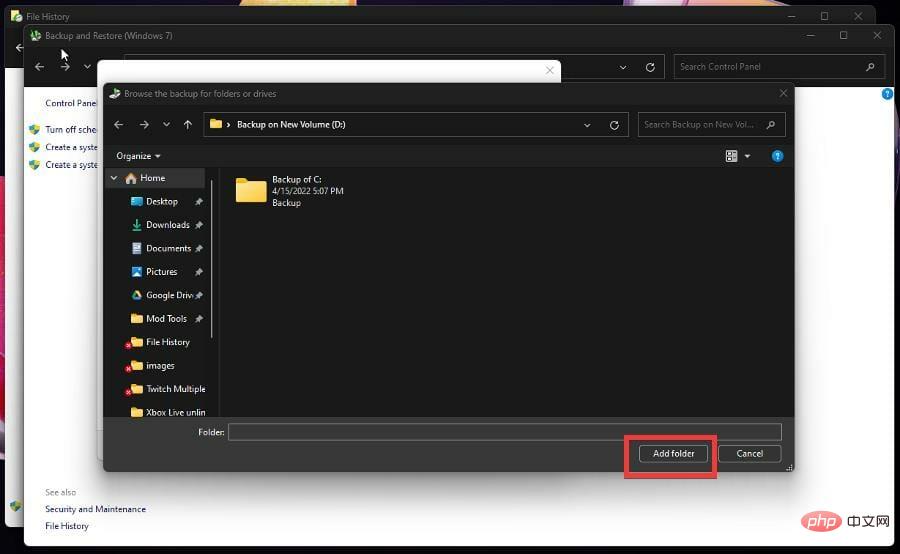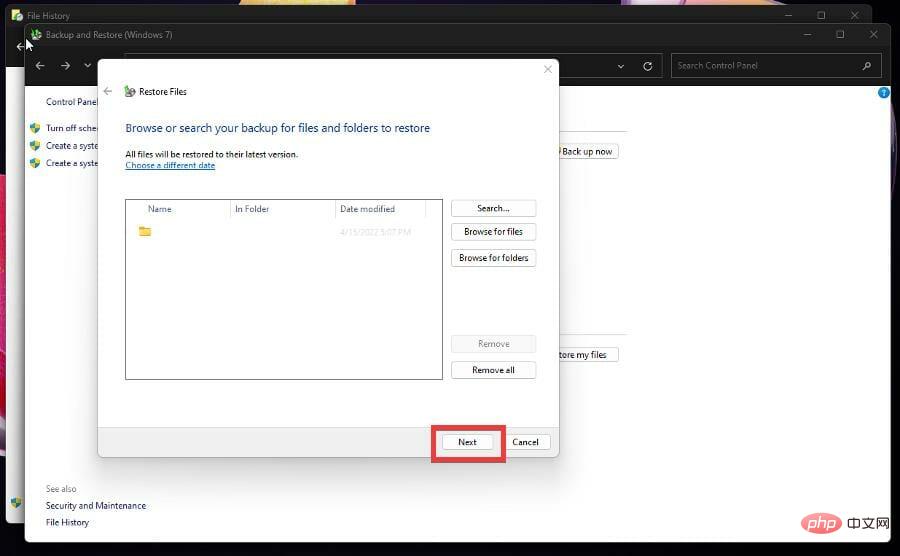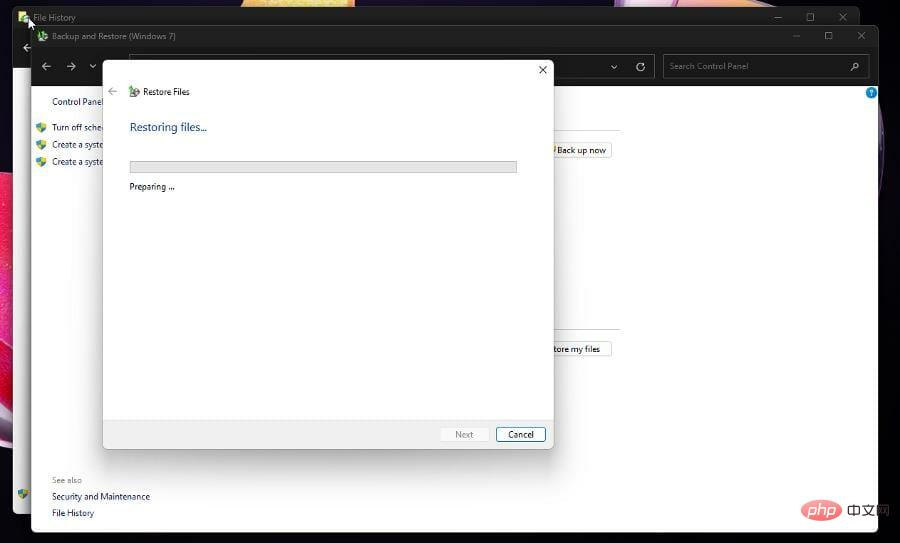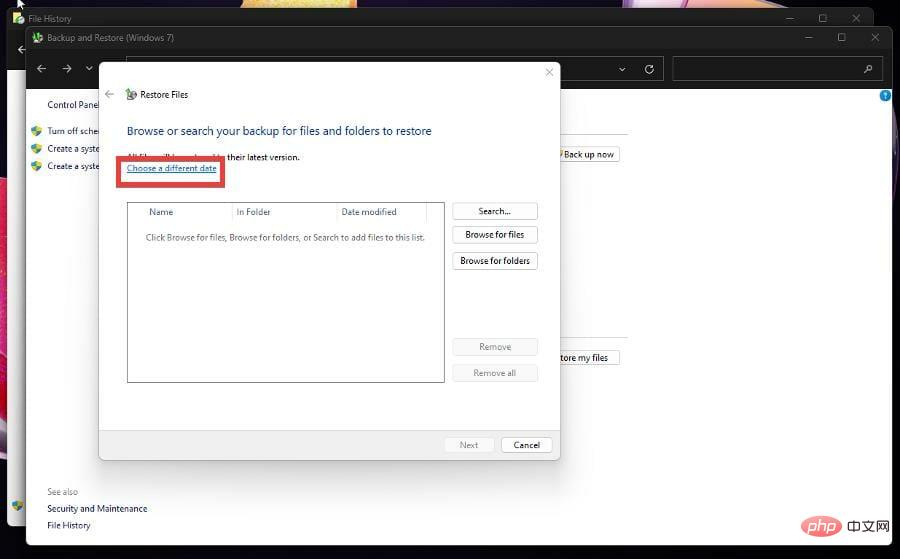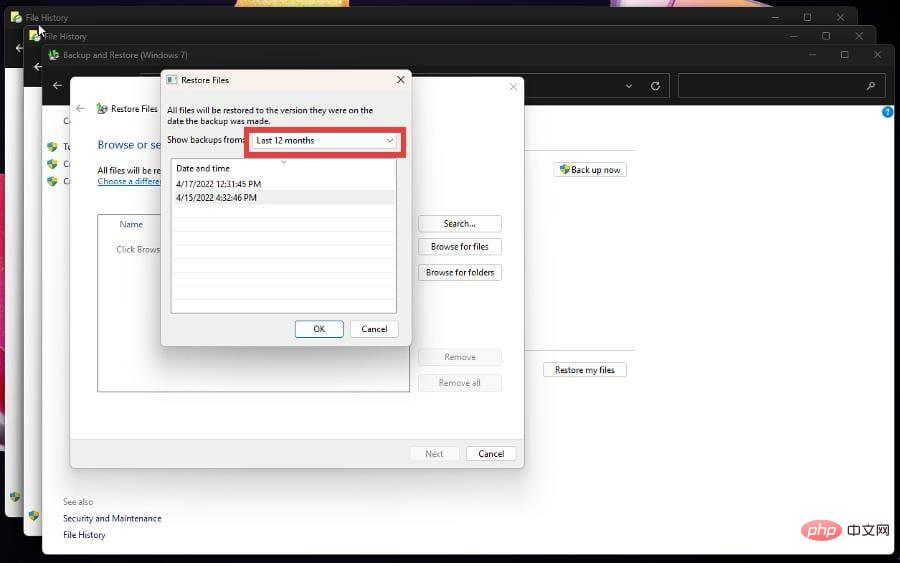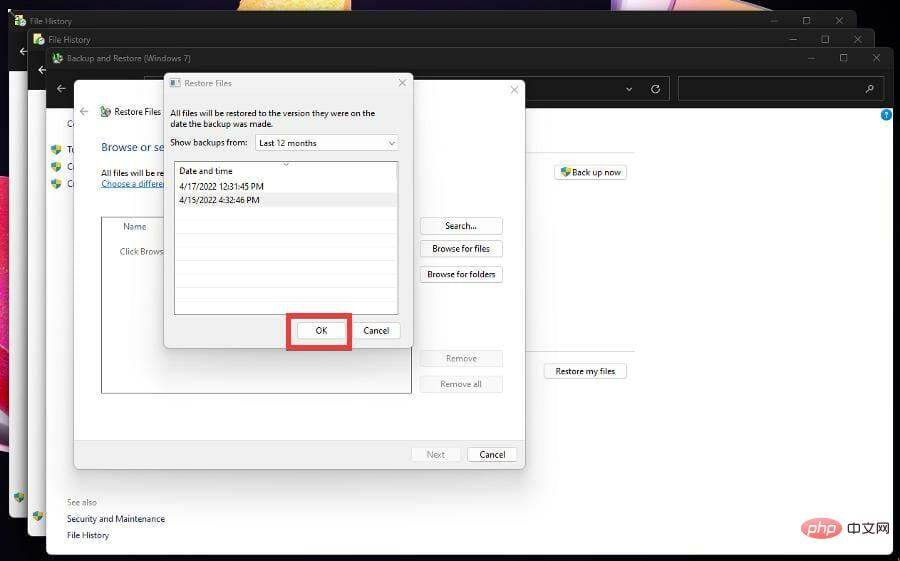Restore Windows 11 backup options in just a few simple steps
In the 2021 update, Microsoft is limiting certain backup features on Windows 11. File History is one of these options and has been a part of Windows systems since Windows 8.
Microsoft is doing this because it wants to push people to use its OneDrive cloud storage more and possibly buy subscriptions to the service. As expected, people are not happy with this move and are asking Microsoft to restore file history.
What are the benefits of file history?
Luckily, Microsoft has restored File History since then. To be fair, the feature isn't much better than OneDrive cloud storage, but people like to have options and choose where they save their files.
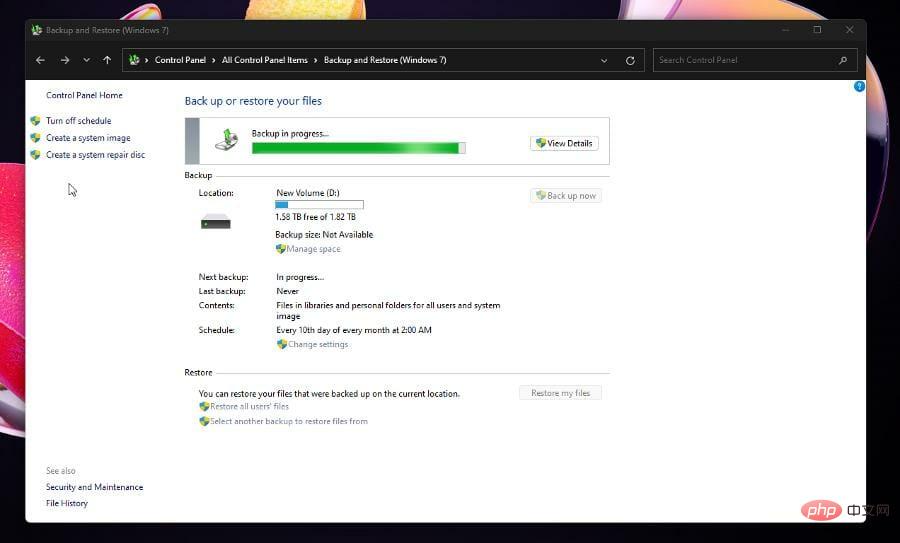
#File History is not the default in Windows 11, although Microsoft has brought it back. You still have to open it and set it up to back up your files.
This tutorial will show you how to turn on the backup option on Windows 11, how to back up your system, and configure the feature.
How do I back up my Windows 11 computer using File History?
1. Open File History
- First click on the magnifying glass icon in the taskbar to bring up the search bar.
- Search Control Panel and click on the top result that appears to open it.

- When Control Panel opens, click System and Security.

- In System and Security, click File History.

-
Instead, you can click the category next to View by and change the layout of the panel.

- In the drop-down menu, select Large icons.
- In this new window, select File History.

- Filter history will take some time to search other drives.

- After finding it, click the "Open" button.

- After opening the filter history, click Run Now to start saving your computer's files to your hard drive.

2. Configure File History
- Stay in the File History section of the Control Panel and select Advanced Settings on the left.

- Here you can decide how often you want to save a copy of your computer. Click the menu next to Save a copy of the file to change this frequency from every 10 minutes to once a day.

- You can change how long copies are kept on your computer by clicking File next to Keep saved versions and making a selection. You can keep them permanently, for a few months, or until you need space.

- Below the versions section are clean versions. Clicking this button will open the File History Cleanup window, which allows you to delete saved versions from your computer.
- You can decide to delete versions older than two years or all but the latest version.

- After determining the time when you want to delete the files, click the "Clean" button.
- Click the links under Event Log to view recent events, errors, and copies you have made.

- When you have finished making changes, click the Save Changes button at the bottom.

- Return to the main file history page, you can change the drive by clicking Select Drive in the upper left corner.

- On this new page, you can select another drive to back up, but for this tutorial, there is only one drive.

- Under this, you can select an existing backup.
- If you want to add another drive on your local network, click Add Network Location and locate the drive. But make sure file sharing is turned on.

- From the home page, you can select which parts of your computer should not be saved by first clicking Exclude Folders.

- In this window, click the Add button to select what should be excluded.

- Make your choice. For this tutorial, the Music Library will be excluded.
- Click the Select Folder button.

- Exclude as many folders as needed. When finished, click the Save Changes button.

3. Create a system image backup
- In the file history, click System Image Backup in the lower left corner.

- Click to set up backup.

- Select the drive where the backup is located. Then click Next.

- You can choose what to back up, but this tutorial will let Windows 11 choose.

- View your backup settings in the next window. You can make frequent changes to Windows 11 by clicking Change Plan Save.
 Choose how often to save backups by making selections in the menu. Click OK.
Choose how often to save backups by making selections in the menu. Click OK.  Click to save settings and run
Click to save settings and run - backup.
 File History will continue to back up your Windows 11 files. It may take a while before it's complete.
File History will continue to back up your Windows 11 files. It may take a while before it's complete.  If you must back up more than 100GB of data, the first backup may take a full 24 hours to complete.
If you must back up more than 100GB of data, the first backup may take a full 24 hours to complete. - When completed, File History will let you know the size of the backup.

- When you need to restore your files, go back to the system image backup of File History.
- Under Restore, click the
- Restore my files button.
 In the Recover Files window, you have several options from which you can choose how to recover your files.
In the Recover Files window, you have several options from which you can choose how to recover your files. - This tutorial will select
- Browse Folder for a full restore, but you can select certain files by clicking Browse Files or Search.
 Select the backup folder and click
Select the backup folder and click - Add Folder.
 Click
Click - Next.
 Then select the location where you want to recover the files. This tutorial will select
Then select the location where you want to recover the files. This tutorial will select - in the original location for ease of operation. Click the
- Restore button.
 Give your computer enough time to complete the process. File size will determine how long it takes.
Give your computer enough time to complete the process. File size will determine how long it takes. 
- Back to the "Recover Files" window, you can choose to recover files from a specific date by clicking "Select a different date" .
 You can select the backup you want to restore by clicking the drop-down menu and making a selection. You can go up to a year or display each backup.
You can select the backup you want to restore by clicking the drop-down menu and making a selection. You can go up to a year or display each backup.  Select the backup at a certain point in time, and then select the "
Select the backup at a certain point in time, and then select the "- OK" button.
 Next, follow the same instructions to restore the backup.
Next, follow the same instructions to restore the backup.
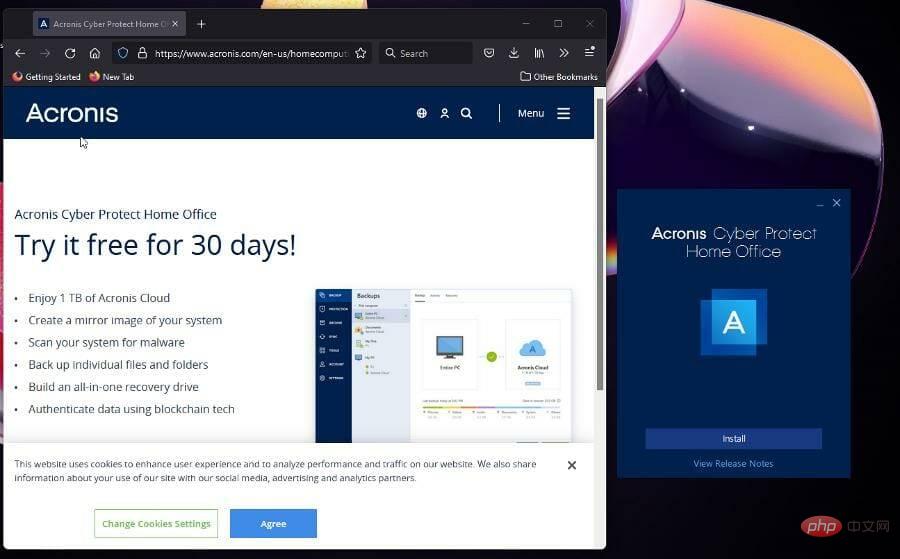
The above is the detailed content of Restore Windows 11 backup options in just a few simple steps. For more information, please follow other related articles on the PHP Chinese website!

Hot AI Tools

Undresser.AI Undress
AI-powered app for creating realistic nude photos

AI Clothes Remover
Online AI tool for removing clothes from photos.

Undress AI Tool
Undress images for free

Clothoff.io
AI clothes remover

Video Face Swap
Swap faces in any video effortlessly with our completely free AI face swap tool!

Hot Article

Hot Tools

Notepad++7.3.1
Easy-to-use and free code editor

SublimeText3 Chinese version
Chinese version, very easy to use

Zend Studio 13.0.1
Powerful PHP integrated development environment

Dreamweaver CS6
Visual web development tools

SublimeText3 Mac version
God-level code editing software (SublimeText3)

Hot Topics
 Can I install mysql on Windows 7
Apr 08, 2025 pm 03:21 PM
Can I install mysql on Windows 7
Apr 08, 2025 pm 03:21 PM
Yes, MySQL can be installed on Windows 7, and although Microsoft has stopped supporting Windows 7, MySQL is still compatible with it. However, the following points should be noted during the installation process: Download the MySQL installer for Windows. Select the appropriate version of MySQL (community or enterprise). Select the appropriate installation directory and character set during the installation process. Set the root user password and keep it properly. Connect to the database for testing. Note the compatibility and security issues on Windows 7, and it is recommended to upgrade to a supported operating system.
 How to solve mysql cannot connect to local host
Apr 08, 2025 pm 02:24 PM
How to solve mysql cannot connect to local host
Apr 08, 2025 pm 02:24 PM
The MySQL connection may be due to the following reasons: MySQL service is not started, the firewall intercepts the connection, the port number is incorrect, the user name or password is incorrect, the listening address in my.cnf is improperly configured, etc. The troubleshooting steps include: 1. Check whether the MySQL service is running; 2. Adjust the firewall settings to allow MySQL to listen to port 3306; 3. Confirm that the port number is consistent with the actual port number; 4. Check whether the user name and password are correct; 5. Make sure the bind-address settings in my.cnf are correct.
 MySQL can't be installed after downloading
Apr 08, 2025 am 11:24 AM
MySQL can't be installed after downloading
Apr 08, 2025 am 11:24 AM
The main reasons for MySQL installation failure are: 1. Permission issues, you need to run as an administrator or use the sudo command; 2. Dependencies are missing, and you need to install relevant development packages; 3. Port conflicts, you need to close the program that occupies port 3306 or modify the configuration file; 4. The installation package is corrupt, you need to download and verify the integrity; 5. The environment variable is incorrectly configured, and the environment variables must be correctly configured according to the operating system. Solve these problems and carefully check each step to successfully install MySQL.
 Solutions to the errors reported by MySQL on a specific system version
Apr 08, 2025 am 11:54 AM
Solutions to the errors reported by MySQL on a specific system version
Apr 08, 2025 am 11:54 AM
The solution to MySQL installation error is: 1. Carefully check the system environment to ensure that the MySQL dependency library requirements are met. Different operating systems and version requirements are different; 2. Carefully read the error message and take corresponding measures according to prompts (such as missing library files or insufficient permissions), such as installing dependencies or using sudo commands; 3. If necessary, try to install the source code and carefully check the compilation log, but this requires a certain amount of Linux knowledge and experience. The key to ultimately solving the problem is to carefully check the system environment and error information, and refer to the official documents.
 How to copy and paste mysql
Apr 08, 2025 pm 07:18 PM
How to copy and paste mysql
Apr 08, 2025 pm 07:18 PM
Copy and paste in MySQL includes the following steps: select the data, copy with Ctrl C (Windows) or Cmd C (Mac); right-click at the target location, select Paste or use Ctrl V (Windows) or Cmd V (Mac); the copied data is inserted into the target location, or replace existing data (depending on whether the data already exists at the target location).
 Unable to access mysql from terminal
Apr 08, 2025 pm 04:57 PM
Unable to access mysql from terminal
Apr 08, 2025 pm 04:57 PM
Unable to access MySQL from the terminal may be due to: MySQL service not running; connection command error; insufficient permissions; firewall blocks connection; MySQL configuration file error.
 Can mysql run on Windows
Apr 08, 2025 pm 01:54 PM
Can mysql run on Windows
Apr 08, 2025 pm 01:54 PM
Running MySQL on Windows is feasible, but challenges such as port conflicts, permission issues, and environment variable settings need to be considered. Installation issues can be solved by customizing configuration files, adjusting user permissions, and setting environment variables correctly. Additionally, the appropriate storage engine should be selected, tweaked configuration files, and SSDs should be used to optimize performance.
 Can vs code run in Windows 8
Apr 15, 2025 pm 07:24 PM
Can vs code run in Windows 8
Apr 15, 2025 pm 07:24 PM
VS Code can run on Windows 8, but the experience may not be great. First make sure the system has been updated to the latest patch, then download the VS Code installation package that matches the system architecture and install it as prompted. After installation, be aware that some extensions may be incompatible with Windows 8 and need to look for alternative extensions or use newer Windows systems in a virtual machine. Install the necessary extensions to check whether they work properly. Although VS Code is feasible on Windows 8, it is recommended to upgrade to a newer Windows system for a better development experience and security.



